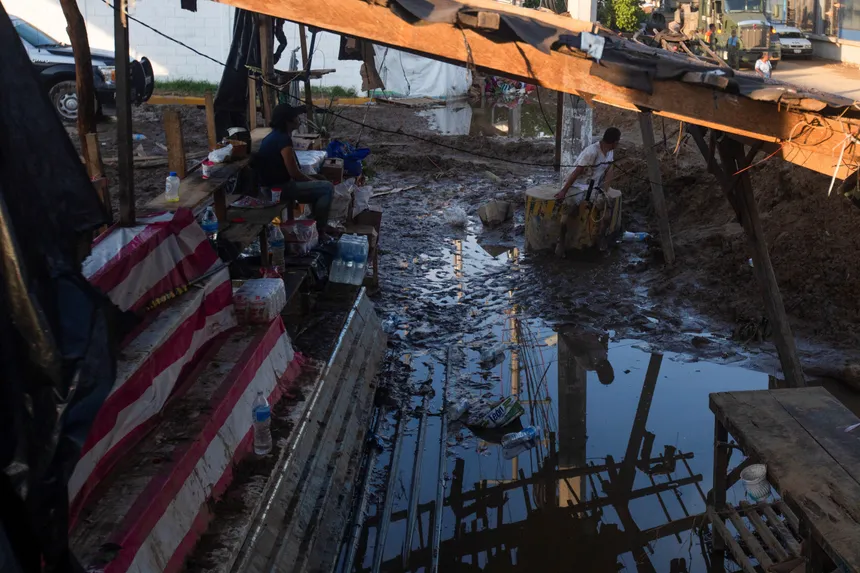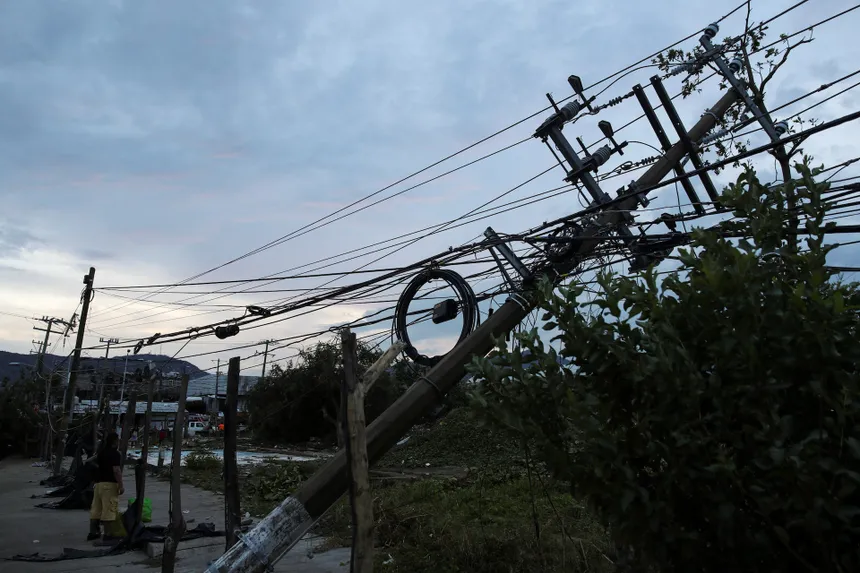Mexico’s government has confirmed that at least 27 people died as a result of Hurricane Otis, which tore through the Pacific resort city of Acapulco with unprecedented ferocity. The storm’s devastation was so complete that not a single power line pole remained standing in the impact zone, said President Andrés Manuel López Obrador at a government press conference.
The president described the destruction as “really disastrous” and announced that the government is working tirelessly to re-establish power and clean up the devastation wrought by the category 5 hurricane. The storm left Acapulco incommunicado, flooding streets, ripping roofs off homes and hotels, and severing communications and road and air access. Downed phone lines and electricity lines made it difficult for officials to quickly assess the extent of the damage.
Early images and accounts of the devastation were of extensive damage, toppled trees and power lines lying in brown floodwaters that stretched for miles. Many of the once-sleek beachfront hotels looked like toothless, shattered hulks after the storm blew out hundreds if not thousands of windows. The destruction was so extensive that the city seemed to be a scene from a disaster movie.
The storm also left a widespread sense of frustration with authorities. Despite the deployment of around 10,000 military troops to the area, they lacked the necessary tools to clean up tons of mud and fallen trees from the streets. Hundreds of trucks from the government electricity company arrived in Acapulco early on Wednesday, but they seemed at a loss as to how to restore power, with downed electricity lines lying in feet of mud and water.

Acapulco resident Jakob Sauczuk, who was staying with a group of friends at a beachfront hotel when the storm hit, remembered lying on the floor, praying for the storm to pass. “We were given no warning, nor were we offered safer shelter,” Sauczuk complained. Another resident, Pablo Navarro, an auto parts worker, thought he might die in his 13th-story hotel room during the storm. “I took shelter in the bathroom, and thankfully the door held,” said Navarro. “But there were some rooms where the wind blew out the windows and the doors.”
It took nearly all day Wednesday for authorities to partly reopen the main highway connecting Acapulco to the state capital, Chilpancingo, and Mexico City. Acapulco’s commercial and military airports were still too badly damaged to resume flights. The city’s Diamond Zone, an oceanfront area with hotels, restaurants, and other tourist attractions, seemed to be mostly underwater, with boulevards and bridges completely hidden by an enormous body of brown water.
Hurricane researcher Brian McNoldy at the University of Miami characterized the storm’s surprise landfall as a “nightmare”. “It’s one thing to have a category 5 hurricane make landfall somewhere when you’re expecting it or expecting a strong hurricane, but to have it happen when you’re not expecting anything to happen is truly a nightmare,” McNoldy said.

